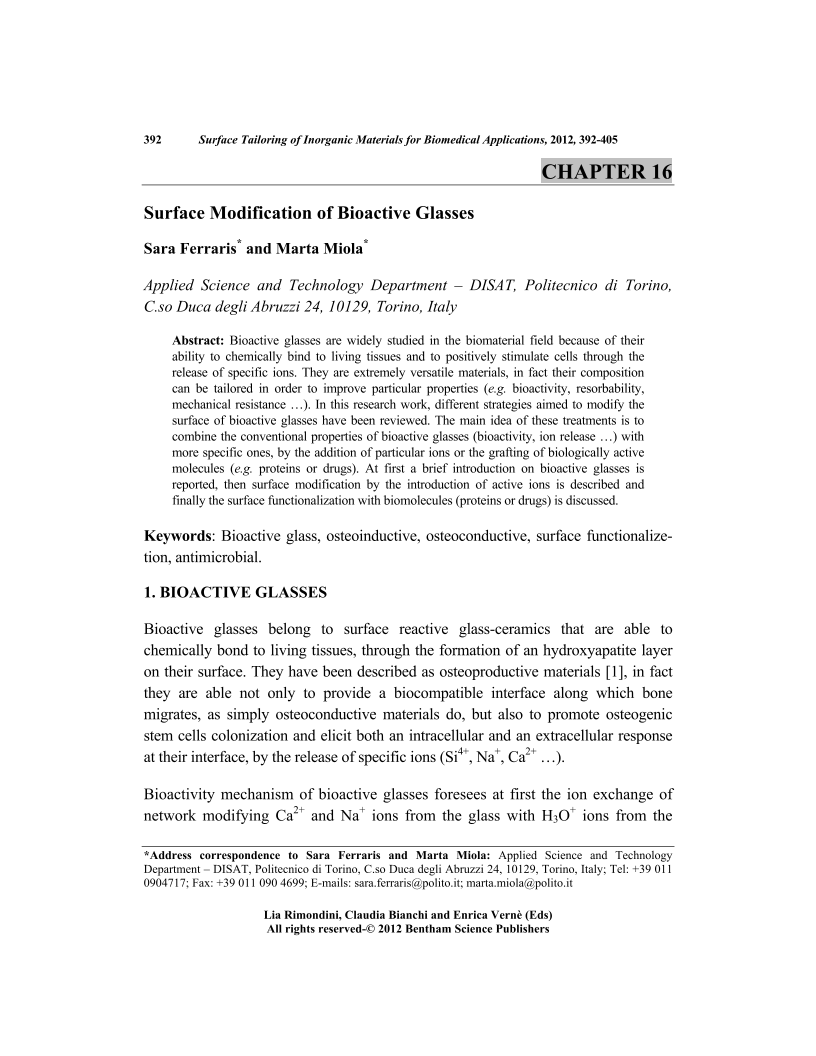Surface Modification of Bioactive Glasses

- Authors: Sara Ferraris1, Marta Miola2
-
View Affiliations Hide Affiliations1 Applied Science and Technology Department DISAT, Politecnico di Torino, C.so Duca degli Abruzzi 24, 10129, Torino, Italy 2 Applied Science and Technology Department DISAT, Politecnico di Torino, C.so Duca degli Abruzzi 24, 10129, Torino, Italy
- Source: Surface Tailoring of Inorganic Materials for Biomedical Applications , pp 392-405
- Publication Date: October 2012
- Language: English
Surface Modification of Bioactive Glasses, Page 1 of 1
< Previous page | Next page > /docserver/preview/fulltext/9781608054626/chapter-16-1.gif
Bioactive glasses are widely studied in the biomaterial field because of their ability to chemically bind to living tissues and to positively stimulate cells through the release of specific ions. They are extremely versatile materials, in fact their composition can be tailored in order to improve particular properties (e.g. bioactivity, resorbability, mechanical resistance ). In this research work, different strategies aimed to modify the surface of bioactive glasses have been reviewed. The main idea of these treatments is to combine the conventional properties of bioactive glasses (bioactivity, ion release ) with more specific ones, by the addition of particular ions or the grafting of biologically active molecules (e.g. proteins or drugs). At first a brief introduction on bioactive glasses is reported, then surface modification by the introduction of active ions is described and finally the surface functionalization with biomolecules (proteins or drugs) is discussed.
-
From This Site
/content/books/9781608054626.chapter-16dcterms_subject,pub_keyword-contentType:Journal -contentType:Figure -contentType:Table -contentType:SupplementaryData105

